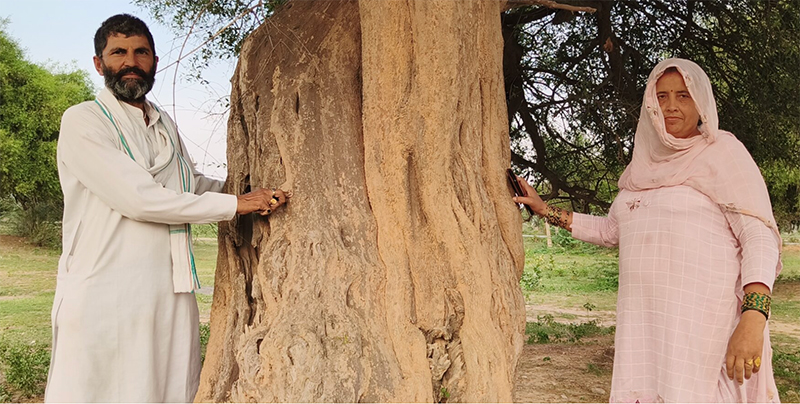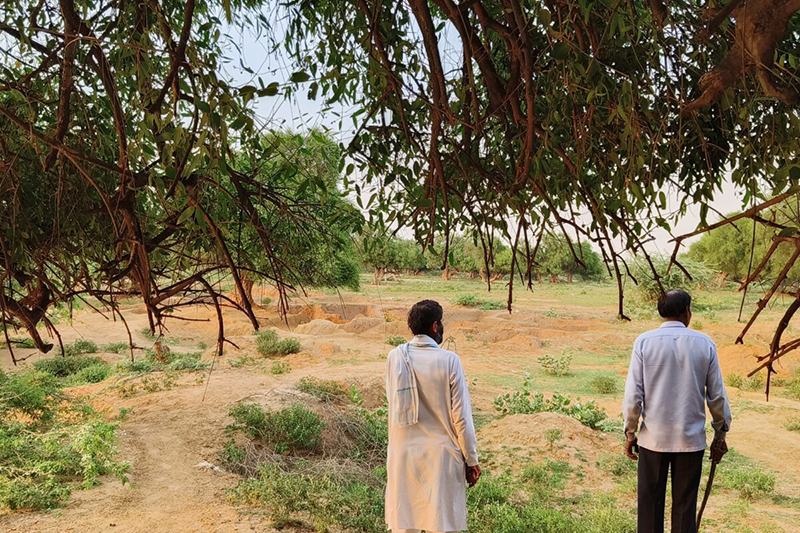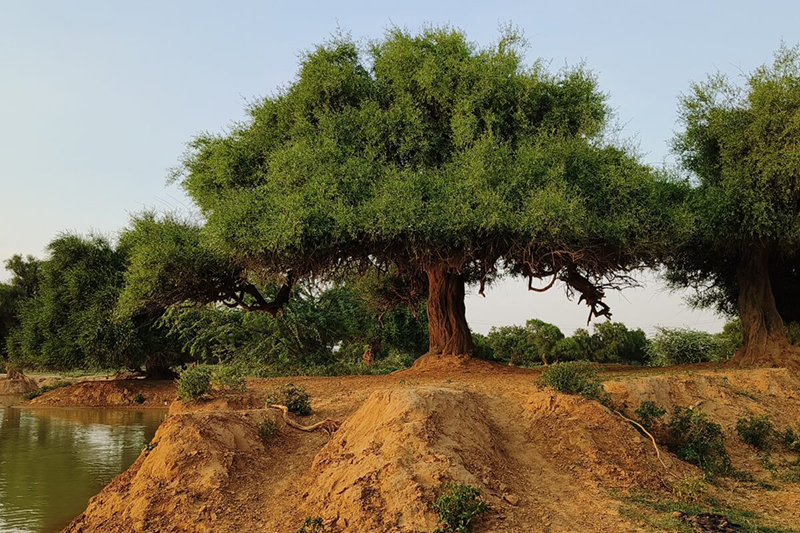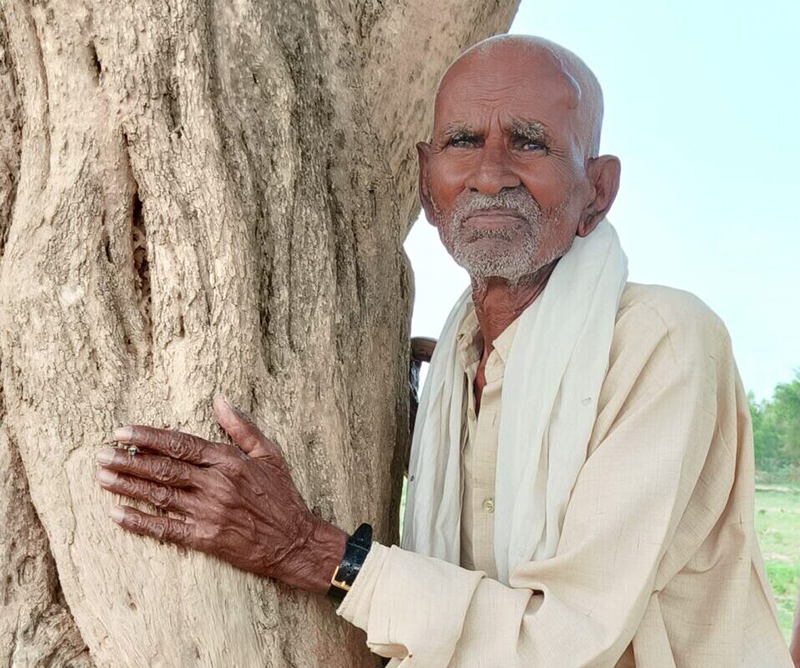 Conservation
Conservation A Haryana village resists government buildings to protect iconic trees
The Thaska village in Haryana is known for its enormous and well-branched Salvadora trees. Some village residents are opposing the construction of the government buildings, However, those supporting the proposal claim that newer construction would mean more livelihood opportunities for the village youth. Mongabay-India writer Sat Singh reports
Some residents of a village in Haryana are opposing the proposed construction of government buildings on forest lands, home to the iconic Salvadora trees. The villagers say it will hinder the ecological balance of the area.
Thaska is a village in the Gohana sub-division of the Sonipat district, situated in the northern part of India. It is known for its enormous and well-branched Salvadora trees, which are said to have antibacterial and hypolipidemic capabilities. The village has over 1,200 houses and 100 acres of forest land, according to Thaska’s revenue records.
 Land in Thaska was identified for a government rice mill and police headquarters but there are differences over whether the land and trees should be protected or made way for infrastructure development and connectivity.
Land in Thaska was identified for a government rice mill and police headquarters but there are differences over whether the land and trees should be protected or made way for infrastructure development and connectivity.
Haryana is among the states with the lowest forest cover (3.59 per cent) in the country, according to the central government’s think tank NITI Aayog.
Ramesh Dutt, who is supervising the village administration, said in mid-2022 the state government had requested land for constructing a state co-operative service and marketing institution known as the Haryana State Co-operative Supply and Marketing Federation Limited (HAFED), and the police line department. He added that the village panchayat had passed a proposal on March 8, 2023, to allot 15 acres of forest land to the state government.
“The land with trees has been unused for decades. After consultation (among elected members of village panchayat), we passed a resolution and sent it to the government,” Dutt said.
Felling the trees hampers ecology of the area
For more than a month, residents have been in a conflict with the sarpanch (head of the village) and his supporters over the resolution to allocate a portion of the forest land for the construction of government buildings. Residents say the ancient Salvadora trees are deeply ingrained in the history of the village and represent a significant cultural and ecological heritage.
Bhalle Singh, 94, the oldest resident of Thaska, told Mongabay India that the trees are considered the collective identity and heritage of the village. “In 1995, when floods ravaged old Rohtak, including Sonipat, the residential areas were submerged in water,” Singh said. “However, these elevated lands where the trees reside, served as our saviours.”
Last month, on May 31, the residents formed a 21-member committee called the Rashtriya Paryavaran Ayum Van Suraksha Parmarth Trust (National Environment and Forest Protection Trust), which seeks to prevent the trees from being felled.
Rajkumar Shastri, president of the committee, told Mongabay India that the forest land comprising Salvadoras has been maintaining ecological balance in many ways. “In the absence of any other water body, the pond located here is being used for drinking purposes by animals of nearby villages,” he said. “There is a restriction on felling of Salvadora trees, as it takes decades to grow a single tree and our village has thousands of such trees. No other village in Haryana has so many Salvadora trees.”
 Thaska village in Haryana is home to Salvadora trees. Photo by Sat Singh.
Thaska village in Haryana is home to Salvadora trees. Photo by Sat Singh.
The committee has handed over a written complaint to Rajya Sabha MP Ram Chander Jangra and the District Development Panchayat Officer, seeking their intervention from felling the trees on forest land.
Land cannot be used for commercial activity, say villagers
Narender Kumar, secretary of the committee, said that in the mid-1960s, the state government offered to distribute the forest land among residents, but the move was vehemently opposed and it was decided that it should be preserved as grazing land for animals. “The village panchayat is the only custodian of this land but cannot sell or part this land for any other commercial activity,” he added.
Committee president Shastri added that those supporting the proposal to allot forest land for government buildings have their agricultural land adjacent to it. “They expect land prices to increase if the government makes construction here,” he added.
Meanwhile, Dutt said that those opposing the proposal are against the development of the village. “If the government sets up its department, then connectivity would increase with the city, and village youth may get some opportunities to earn their livelihood. Otherwise, the village youth have no other way to make their living, except agriculture,” Dutt added.
He said that to make up for the felling of trees, more plantations could be done on the sides of government buildings for restoration of the ecology and environment.
 One of the oldest living residents of the village considers the Salvadora trees as part of the collective identity and heritage of the village. Photo by Sat Singh.
One of the oldest living residents of the village considers the Salvadora trees as part of the collective identity and heritage of the village. Photo by Sat Singh.
Rajpal Chahal, the District Development Panchayat Officer, told Mongabay India that the government identified village land in Thaska for setting up the police district headquarters and rice mill, and they are aware of the ongoing issue as the village residents have lodged their resentment. He added that several villagers had submitted a memorandum regarding a large number of iconic trees present at the proposed site.
“A report was sought from the district forest officer that mentioned that trees on the proposed land are old and need to be preserved,” Chahal said. “The report will be submitted before the competent authorities and the final decision will be taken by them.”
Meanwhile, the Sonipat District Forest Officer, Rajesh Vats, said that the land where these trees are located is not under the jurisdiction of the forest area, but if the administration plans to chop them down, he would intervene and speak to them about preservation of the trees.
Support Our Journalism
We cannot do without you.. your contribution supports unbiased journalism
IBNS is not driven by any ism- not wokeism, not racism, not skewed secularism, not hyper right-wing or left liberal ideals, nor by any hardline religious beliefs or hyper nationalism. We want to serve you good old objective news, as they are. We do not judge or preach. We let people decide for themselves. We only try to present factual and well-sourced news.







